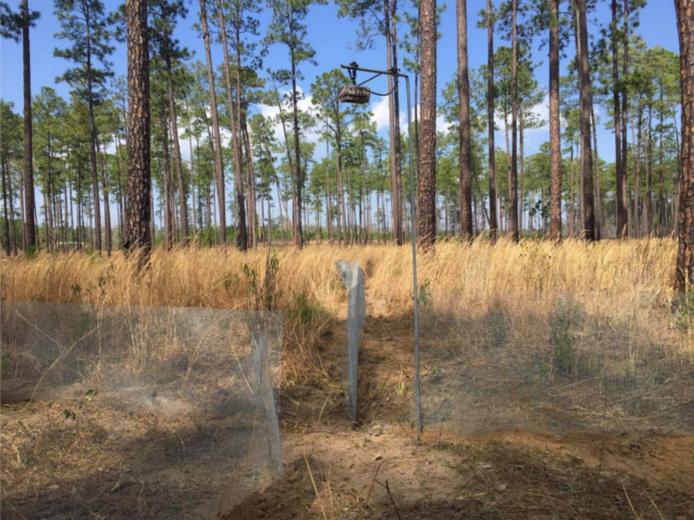
2 minute read
Searching for rare and secretive snakes: are camera-trap and box-trap methods interchangeable
AUTHORS:
DALTON NEUHARTH WADE RYBERG CONNOR ADAMS TOBY HIBBITTS DANIELLE WALKUP SHELBY FRIZZELL TIMOTHY JOHNSON BRIAN PIERCE JOSH PIERCE D. CRAIG RUDOLPH
WHAT'S THE IMPACT?
Through testing, this research discovered that the detection of rare species were higher with camera traps versus box traps, and concludes that an efficient way to detect rare species is to 1) begin broad observation with camera traps and then 2) to follow up with box traps in specific sighting locations.
CITATION
Neuharth, Dalton B., Wade A. Ryberg, Connor S. Adams, Toby J. Hibbitts, Danielle K. Walkup, Shelby L. Frizzell, Timothy E. Johnson, Brian L. Pierce, Josh B. Pierce, and D. Craig Rudolph. "Searching for rare and secretive snakes: are camera-trap and box-trap methods interchangeable?. " Wildlife Research (2020).
JOURNAL ABSTRACT
Context. Advancements in camera-trap technology have provided wildlife researchers with a new technique to better understand their study species. This improved method may be especially useful for many conservation-reliant snake species that can be difficult to detect because of rarity and life histories with secretive behaviours. Aims. Here, we report the results of a 6-month camera-trapping study using time lapse-triggered camera traps to detect snakes, in particular the federally listed Louisiana pinesnake (Pituophis ruthveni) in eastern Texas upland forests in the USA. Methods. So as to evaluate the efficacy of this method of snake detection, we compared camera-trap data with traditional box-trapping data collected over the same time period across a similar habitat type, and with the same goal of detecting P. ruthveni. Key results. No differences in focal snake species richness were detected across the trap methods, although the snake detection rate was nearly three times higher with camera traps than with the box traps. Detection rates of individual snake species varied with the trapping method for all but two species, but temporal trends in detection rates were similar across the trap methods for all but two species. Neither trap method detected P. ruthveni in the present study, but the species has been detected with both trap methods at other sites. Conclusions. The higher snake-detection rate of the camera-trap method suggests that pairing this method with traditional box traps could increase the detection of P. ruthveni where it occurs. For future monitoring and research on P. ruthveni, and other similarly rare and secretive species of conservation concern, we believe these methods could be used interchangeably by saturating potentially occupied habitats with camera traps initially and then replacing cameras with box traps when the target species is detected. Implications. There are financial and logistical limits to monitoring and researching rare and secretive species with box traps, and those limits are far less restrictive with camera traps. The ability to use camera-trap technologies interchangeably with box-trap methods to collect similar data more efficiently and effectively will have a significant impact on snake conservation.
ACCESS THE PUBLICATION
This research was funded by Texas A&M Natural Resources Institute and the Texas Comptroller of Public Accounts. This research was conducted under Texas A&M University animal care permit number 2016-0178 and Texas Parks and Wildlife Department scientific research permit number SPR0506-662.










